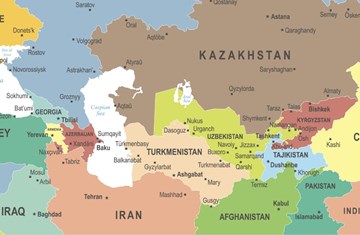Qur’anic Studies Lecture on Pragmatic Aspects of the Religious Text
The Qur’anic Studies Unit hosted an occasional lecture by Dr Asma Hilali of the Centre National de la Recherche Scientifique, Paris entitled Pragmatic Aspects of the Religious Text: The San‘a Qur’an Palimpsest in May 2010.
In her presentation, Dr Hilali proposed a method for the study of Islamic religious texts focusing on their textual and contextual components. She used the San‘a Qur’an palimpsest, dated between the seventh and mid-ninth century CE, as the principal example. A palimpsest is a manuscript, often made of parchment, which has been scraped off, cleaned and used again. This usually results in two layers of writing. This manuscript, discovered in 1972, is possibly the earliest extant version of the Qur’anic manuscript, it was discovered in the false ceiling of the Great Mosque in San‘a.
The two layers of text in this palimpsest both contain fragments of Qur’anic verses. However, the relationship between these two sets of fragments is problematic. They are not necessarily fragments from the same manuscript nor were they destined for the same uses. The texts from the two layers do not seem to be linked in any way, apart from being contained in the same writing space. A key question Dr Hilali seeks to answer is: Why was the lower layer of Qur’anic text erased and replaced by another text from the Qur’an?
Analysing this particular palimpsest, she showed how the manuscript’s specific teaching or recitation context affects the text’s content. Furthermore, she explored the significance of the transmission process as well as the fragmentary nature of religious literature. Giving concrete examples from hadith literature, she argued that these historical elements have two literary consequences: the mixture of literary genres and the transformation process of the transmitted texts.
In her concluding remarks, Dr Hilali, stressed the issue of a text’s authority and how it results from the connection between different elements of the transmission process, including the text, its transmitters and, most important of all, its usage. She suggested that the authority of a religious text comes from its use and not vice-versa. In her view, the authoritative texts of the Holy Qu’ran and hadith, although related to Prophet Muhammad, seem independent from his prophetic career even though they are linked to it in terms of representation. In fact, Prophet Muhammad’s authority can be seen as a complex historical process, inseparable from the authority of the religious texts.






